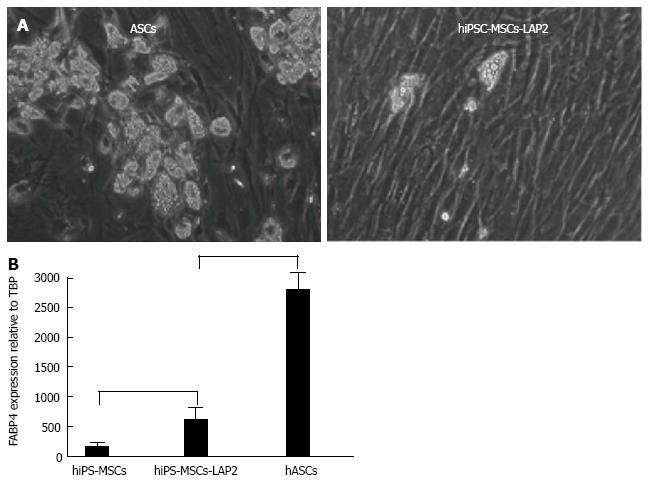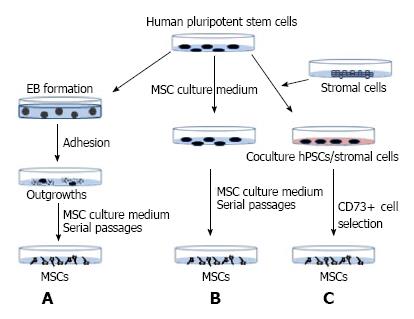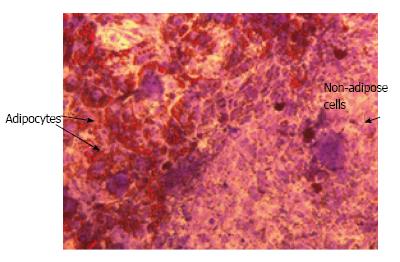Copyright
©2014 Baishideng Publishing Group Inc.
World J Stem Cells. Sep 26, 2014; 6(4): 467-472
Published online Sep 26, 2014. doi: 10.4252/wjsc.v6.i4.467
Published online Sep 26, 2014. doi: 10.4252/wjsc.v6.i4.467
Figure 1 Adipogenic capacities of mesenchymal stem cells derived from human induced pluripotent stem cells and from human adipose tissue (adipose-derive stem cells).
A: Microphographic images showing adipocytes generated from hiPSC-MSCs transduced with C/EBPb LAP (left) and from adult ASCs (right); B: Adipocyte differentiation potentials quantified via FABP4 adipogenic gene expression. MSCs: Mesenchymal stem cells; hiPSCs: Human induced pluripotent stem cells; ASCs: Adipose-derive stem cells.
Figure 2 Mesenchymal stem cell derivation strategies.
MSCs were derived from hiPSCs following (A) or not (B) embryoid body formation. Alternatively, hiPSCs were maintained in co-culture with murine stromal cells, and then MSCs were derived following selection of CD73-positive cells (C). MSCs: Mesenchymal stem cells; hiPSCs: Human induced pluripotent stem cells.
Figure 3 A niche for adipocytes when mesenchymal stem cells are maintained in the human induced pluripotent stem cells environment.
Differentiated hiPSCs stained with Oil Red O, a specific stain for lipid droplets, to reveal adipocytes, and with violet crystal, a non specific stain, to reveal other cells. hiPSCs: Human induced pluripotent stem cells.
- Citation: Hafner AL, Dani C. Human induced pluripotent stem cells: A new source for brown and white adipocytes. World J Stem Cells 2014; 6(4): 467-472
- URL: https://www.wjgnet.com/1948-0210/full/v6/i4/467.htm
- DOI: https://dx.doi.org/10.4252/wjsc.v6.i4.467











